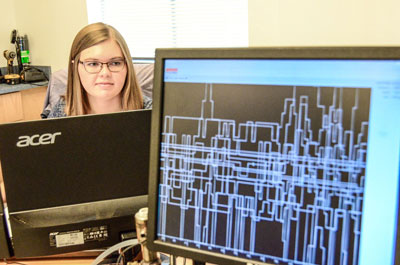Engineers from West Virginia University (WVU) received backing to develop an improved methane monitoring network for greater longwall safety. Derek Johnson, associate professor of mechanical and aerospace engineering in the Statler College, who is steering the work, said a refined network of sensors could enable proactive responses to rising gas levels, versus current practices of a single shearer-mounted methane sensor and intermittent measurements with handheld units.

Johnson and George B. Berry chair emeritus of engineering and research professor Nigel Clark together received a second grant from the Alpha Foundation to build upon its prior findings.
With the money, it will be able to further develop and refine a second generation of the watchdog system, which it called a cost-effective and multi-nodal network that can be placed across the longwall face.
“During the first program, we evaluated two, low-cost methane sensors and identified their strengths and weaknesses,” said Johnson. “We also focused on the use of 3D-printed water powered ejectors as an inherently safe method to provide the motive force for sampling methane from various locations. This method enabled the sample to be transported to central nodes for concentration measurements.”
Second-generation work will include improving six key areas of its research, including sensor technology, conducting scaled demonstrations and adding additional technology as needed before the system is deployed to active mines.
“After the key areas are addressed, the general goal is for the multi-nodal network of sensors to monitor and alert miners of elevated methane before they would have to walk into the area and take a measurement with a handheld system,” Johnson said. “The system will provide an alarm at one percent methane and can shut down equipment at one and a half or two percent methane in air.”
The WVU team has talked with an unnamed industry partner to get a state-of-the-art dual infrared sensor that it could integrate that would negate the need for a two-sensor approach. If it is successful, it will redesign the system.
Graduate research assistant Amber Barr from the school will use computational fluid dynamics modeling as well as 3D printing and experiments to develop an improved water ejector at the lab. WVU said these results will help predict operation with higher water pressures.
